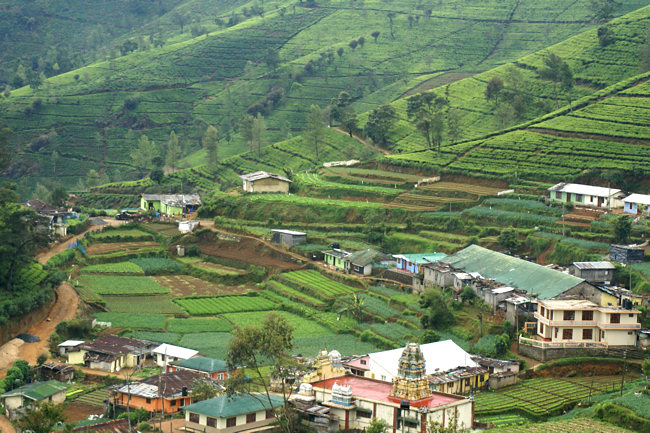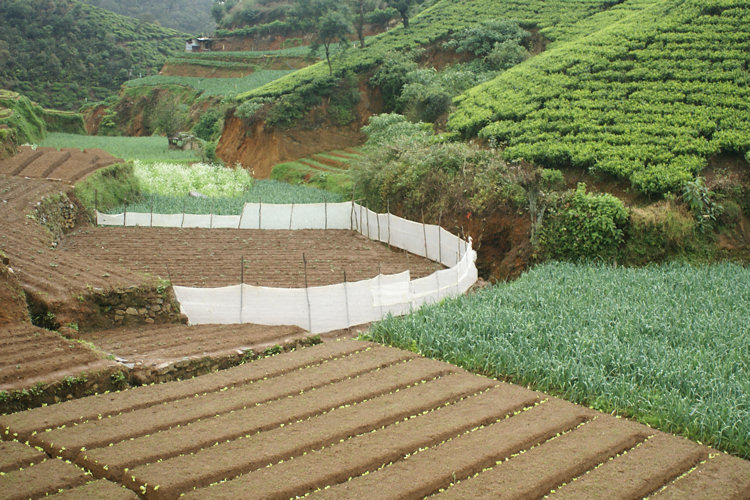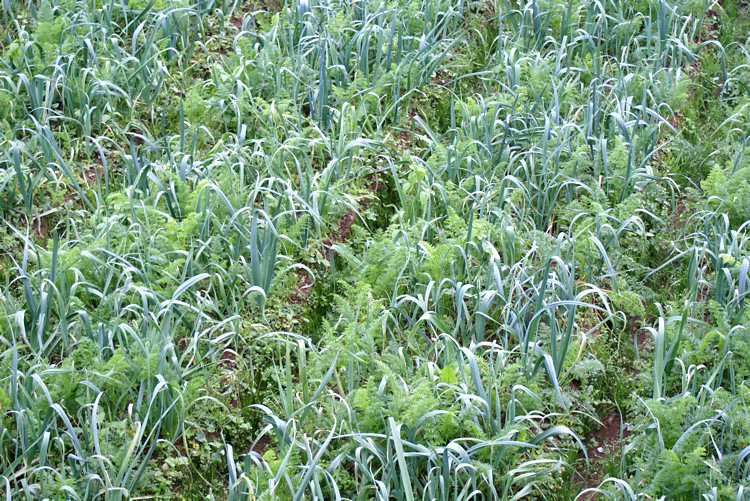The lives of the Ceylon Tea Plantation Workers
Most of the Sri Lankan tea plantation workers are Tamils who immigrated to Sri Lanka from the South of India. They are Hindu and this is why you will see a lot of Hindu temples in the tea growing regions of the island.

Ceylon Tea Plantation Workers village and Vegetable plots amongst the tea fields
The British needed a cheap labour force and they encourage the migration. The building with the red roof in the photograph below is a hindu Temple. You can see the yellow stone ornately carved tower and arch over the front door.
The plantation owners set up little villages amongst the rolling tea covered hills to accommodate their work force. Each family was given a plot of land to grow vegetables The woman are employed as tea leaf pickers as they have more delicate fingers.
The men are given labouring jobs around the plantations like planting and pruning. They also look after the family vegetable garden plot. The tea pickers use crop rotation on their plots to ensure the fertility of the land and most crops can be picked after three to four months of planting.

Ceylon Tea Plantation Workers Vegetable cash crop allotments in Sri Lanka.
Because of the high altitude and cooler temperatures the Ceylon Tea Plantation Worker's of Sri Lanka can grow many European vegetables that are in high demand in the tropical costal cities. They grow enough for their own family and any extra vegetables are parcelled up and sold to the visiting Green Grocer merchants who travel to the Sri Lankan highlands to purchase these cash crops.
In the late afternoon you will see lorries being loaded with carrots, potatoes, leeks and salad vegetables. When the lorry is full they travel back down to the coast through the night. The food is sold at the Colombo Wholesale Vegetable market that starts about 4am. Smaller shop owners and restaurant come to buy the new produce to sell on in their own shops or use them to make food for their guests.

Ceylon Tea Plantation Workers carrot and leek Vegetable plots in the Sri Lankan Highlands
Over the years the farming technique has been developed so that the plots are just the right size. The lines you see either side of a long thin strip of raised soil is just the right width for a human foot. The width of plot is just wide enough so that the plantation worker can reach the other side easily. The Sri Lankan Tamils use a very clever method of companion planting.
The bugs and vermin that would nibble on the carrot tops are put off by the the planting of leeks and onions together. On the photograph above you will see dots of lime green along the edges of each plot. These are lettuce. They are planted to distract the pests from the cash crops. The pests nibble the lettuce leaves and leave the other plants alone. It is a very clever and easy way to protect and grow vegetables.
Travel books

